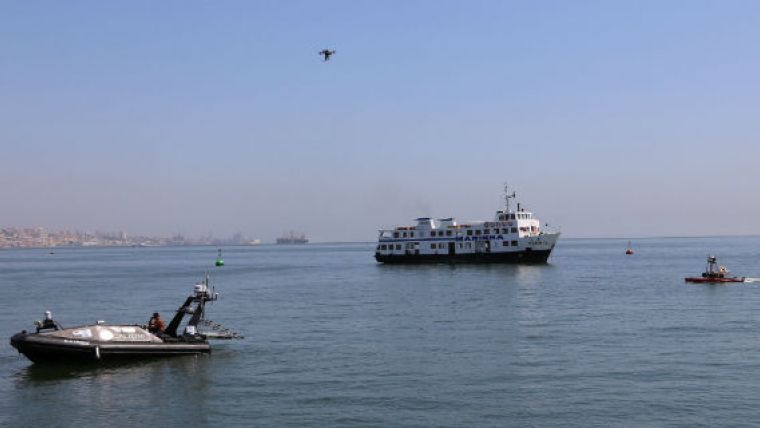ICARUS Robotic Search and Rescue Ready from 2016
On 9-10 July 2015, at the Portuguese Navy Base of Alfeite (Almada) in Lisbon, 24 Project Partners from 9 countries demonstrated the ICARUS (Integrated Components for Assisted Rescue and Unmanned Search Operations) system, as a final step of the ICARUS European project funded by the European Commission under the Seventh Framework Programme for Research and Innovation (FP7). The demonstration included Unmanned Surface Vehicles (USVs) and Unmanned Aerial Vehicles (UAVs), linked together in a shared robotic network that enhances interoperability and full collaboration.
During the ICARUS final event in Lisbon, the Project Partners coming from Portugal (CINAV, INESC, ESRI), Spain (EURECAT and INTEGRASYS), Switzerland (ETHZ), Italy (CMRE, Calzoni), Poland (IMM) and Belgium (SpaceApplicationServices) demonstrated the effectiveness of the system in the event of a maritime accident. It can be helpful in a situation where a passenger ship is experiencing problems in high seas, but where the atmospheric and maritime conditions are not allowing the search and rescue teams to perform the rescue operation of victims in safety.
Intelligent Autonomy Tools
The NATO Centre for Maritime Research and Experimentation (CMRE) intelligent autonomy tools have been fully integrated into an existing robotic asset (USV) developed by an Italian company, L3 Calzoni.
Started in 2012, ICARUS has been devoted to developing advanced robotic platforms, which can support crisis intervention teams in detecting, locating and rescuing humans in danger, in maritime and land disaster scenarios. Unmanned Search and Rescue (SAR) devices offer valuable tools for saving human lives and for speeding up the SAR process. This is particularly crucial for maritime incidents, in which survival times are short and during which even SAR teams take considerable risks.
Integration of USVs and UAVs
CMRE played a crucial role in developing the maritime component of the ICARUS European project, including enhanced autonomy and integration between Unmanned Surface Vehicles and Unmanned Aerial Vehicles.
The system will be ready for use from 2016 when the ICARUS project officially ends. The Project’s Consortium includes end-users, such as the Portuguese Navy and the Belgian First Aid and Support Team (B-FAST), which has already shown an interest in further exploitation of the technology as a complementary support tool for SAR teams.














